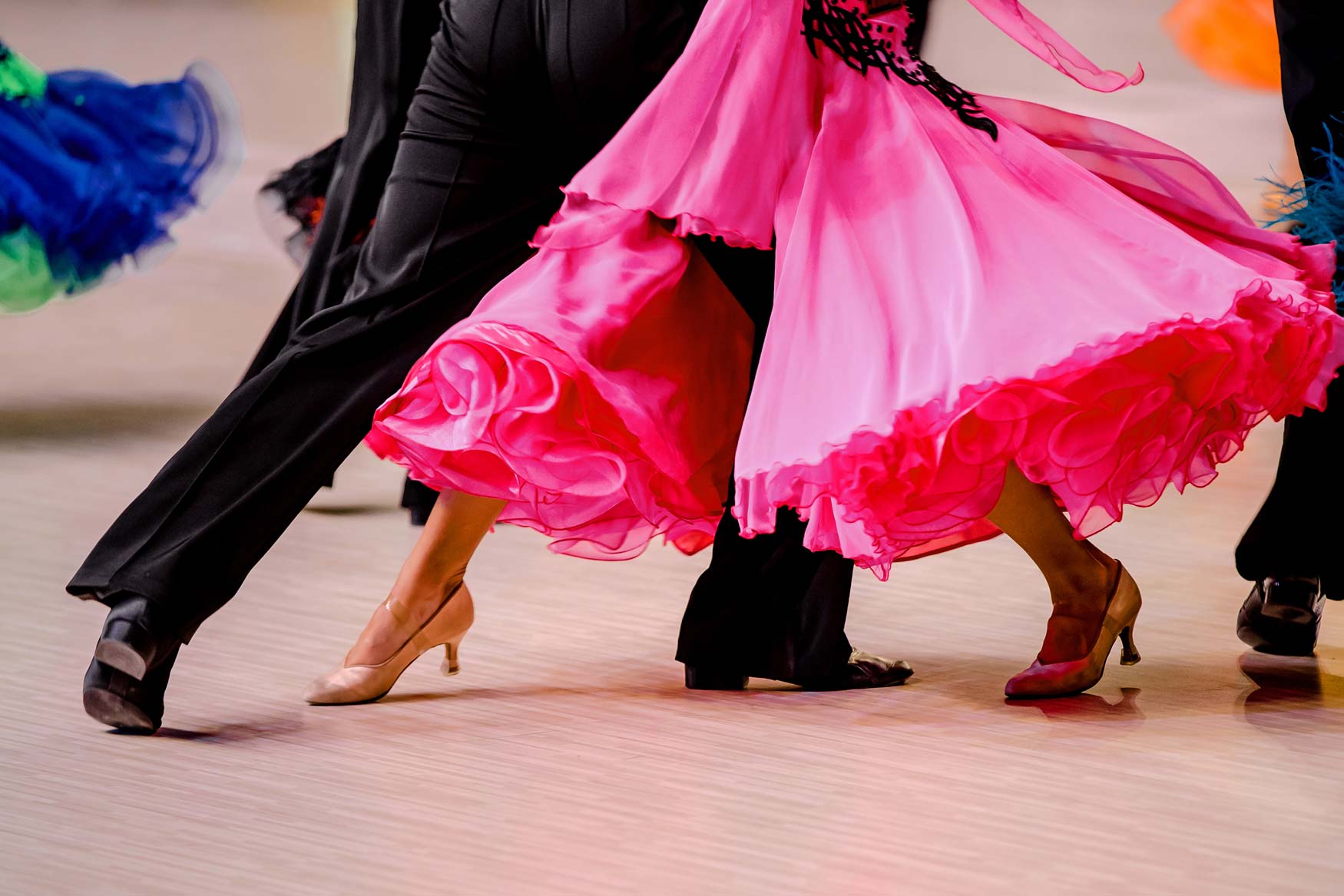Foxtrot Dance Classes
The Foxtrot provides a good foundation for all dances & is often called the 'get-acquainted' or 'first impression' dance.
Foxtrot history
In 1913, Harry Fox, a vaudeville comedian, introduced a trot to a ragtime song in the Ziegfeld Follies that pushed other trots into the background. It became America's most popular dance and remains so to this day as the standard of social dances.
Foxtrot music
Foxtrot music is written in 2/4 or 4/4 time. The first and third beats are accented in 4/4 time. The range of Foxtrot tempos makes it possible to consider Foxtrot as though it were three dances - Slow Foxtrot, Medium Foxtrot and Fast Foxtrot (also called Society Tempo). Foxtrot has two major teaching rhythms - Magic Rhythm (slow, slow, quick, quick) and Box Rhythm (slow, quick, quick).
Foxtrot characteristics
The basic components of Foxtrot are walking steps and side steps. Crowded dance floors or night club conditions require that all three tempos be expressed with short steps. In larger ballrooms, the Slow Foxtrot is characterised by longer, smooth, gliding steps, demanding ease of movement and control in order to give this dance an unhurried appearance.
Watch the Foxtrot!
Arthur Murray students dancing the Foxtrot at the Australasian Dance-O-Rama 2019.

